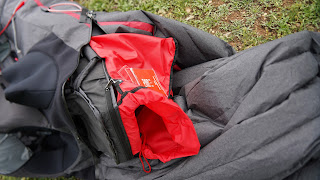AD Hero 2 S
After test-flying the EN-C VOLT 5 from AD, here is the review of the new 2024/25 Hero 2 in the 2-liner EN-D category.
The Hero 2 is a light hike and fly, XC, and competition wing from Airdesign. The construction is very light with around 3.5 kg for the glider.
Take-off is super easy even in little wind. The Hero 2 rises smoothly and evenly and I think it is as easy to inflate as the Omega ULS or the Zeolite 2 GT.
In the air, at 89 all up, with my Impress 4 harness, the brake travel is short with moderate and smooth pressure, and a linear feel. Between the light 2-liner D’s I think it resembles the Klimber brake travel, with slightly less pressure.
I could describe the brake feel as short, very direct, linear, and smooth. A delight to fly! I had a really nice time flying the Hero 2 for the amount of handling pleasure it delivers. Tight turns need around 10-15 cm with very good agility.
The whole structure is very homogenous, and the glider moves smoothly as a whole without parasital movements! The Hero 2 is an easy 2-liner D glider to fly. It resembles the Omega ULS in comfort. A very sweet glider to fly in strong air for the D class.
The Hero 2 doesn’t have a positive nor a back pitch when entering thermals at 89 all up. It just slows a little before entry but still goes slowly forward. The brakes can place it accurately inside any small core, and that delivers a nice climb rate. The feel on the EN-C Volt 5 is a slighter pitch forward upon entry. The Hero 2 has another feel.
Doing some glides next to my reference gliders showed me a glide similar to the Klimber 3, Omega ULS. The speed bar has a moderate pressure that gets you around 19 km/h over trim, and it is very usable with a solid glider overhead. The B steering is quite efficient in controlling the pitch while on the bar with also moderate pressure.
Ears are doable with outer B’s. Easy and efficient. Wingovers have a lot of energy and fun to make. Landing is a non-event with low stall speed.
Conclusion:
Test flying that nice machine is a must for any pilot aiming for a light easy EN-D with nice handling and a pleasurable overall feel.



















